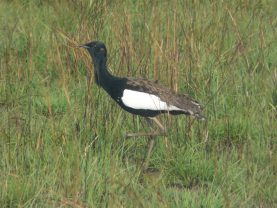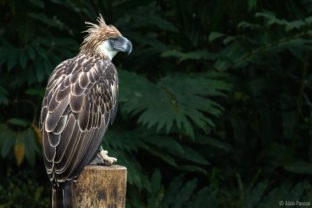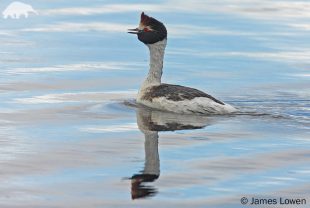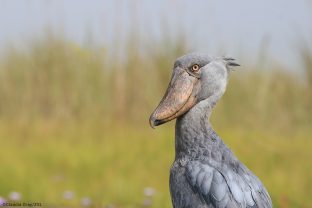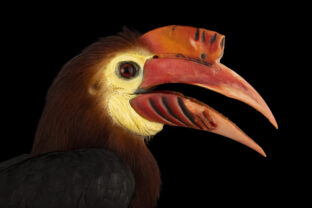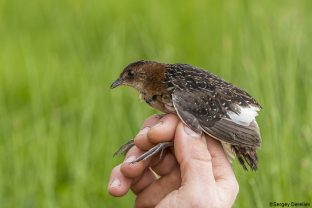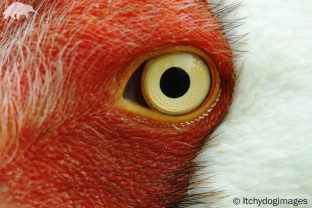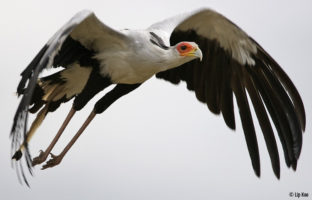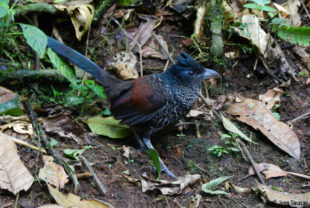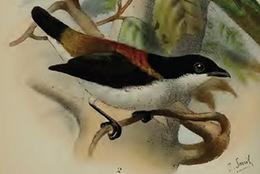TOP EDGE Birds
Bengal Florican
Houbaropsis bengalensis
This otherwise reclusive bird is best known for its elaborate courtship display, where the male’s black and white plumage is shown off to good effect in short arching display flights, as well as choreographed strutting – with fluffed up neck feathers and a head pumping action, to attract females.
Conservation Attention
Medium
Philippine Eagle
Pithecophaga jefferyi
The Philippine Eagle is one of the world’s largest, most powerful birds of prey.
Conservation Attention
Medium
Hooded Grebe
Podiceps gallardoi
Only discovered in 1974 the Hooded Grebe is found in regions across Argentina and possibly Chile.
Conservation Attention
Medium
Shoebill
Balaeniceps rex
This large waterbird is unmistakable due to its unique ‘shoe-shaped’ bill which gives it an almost prehistoric appearance – reminding us of birds’ dinosaur ancestry.
Conservation Attention
Good
Rufous-headed Hornbill
Rhabdotorrhinus waldeni
This colourful and distinctive bird is one of the most endangered Hornbills.
Conservation Attention
Very Low
White-winged Flufftail
Sarothrura ayresi
The White-winged Flufftail is a very rare and tiny African bird which breeds north of the equator in Ethiopia and then migrates south to Zambia, Zimbabwe and South Africa.
Conservation Attention
Medium
Siberian Crane
Leucogeranus leucogeranus
This large white crane, with its elegant long legs and neck, stands at well over a metre in height.
Conservation Attention
Medium
Secretarybird
Sagittarius serpentarius
This elegant, long-legged bird kills its prey by repeatedly stamping on it.
Conservation Attention
Low
Banded Ground-cuckoo
Neomorphus radiolosus
Despite the large size of the Banded Ground-cuckoo, this species is inconspicuous and not easy to observe.
Conservation Attention
Low
Cebu Flowerpecker
Dicaeum quadricolor
In the late 1800s, this species was known from only two localities in Cebu, where it was incredibly rare.
Conservation Attention
Very Low
Lappet-Faced Vulture
Torgos tracheliotos
The Lappet-faced vulture has the largest wingspan of any vulture in Africa!
Conservation Attention
Good
